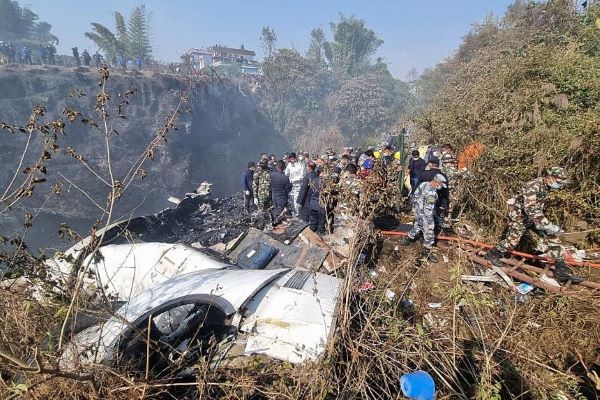
Team News Riveting
Kathmandu, January 16
The pilot of the ill-fated aircraft that crashed near Pokhara in Nepal yesterday may have misjudged the landing causing him to stall the plane and loss control.
Aviation experts suggested the reason behind the tragic crash that left 69 people dead. Nepal’s thin atmosphere combined with a speed miscalculation by the pilot could be the possible reason.
Sky News Aviation Expert Captain Byron Bailey suggested that stalling was the most probable cause of the crash as the pilot was “flying very slowly.” He explained that all Nepalese airports require special pilot certification because of their “steep approaches.” The approaches in Nepal because of the steep mountains require a steeper than normal six-degree approach whereas a normal approach would be three degrees.
“Which means you come down a steep angle at idle with the gear and the flaps down and what happens is at about 300ft you suddenly have to transition to a three-degree slope for the landing. If you’re not sharp or one of the engines fails to spool up when you increase thrust to maintain the three-degree slope you could suddenly find yourself in a difficult situation,” Bailey said. Basically, the pilot lost control either through the left engine not spooling up fast when he wanted to increase power to maintain the three-degree slope or the pilot was too slow to react, he added.
It is a case of aerodynamic stall, that the pilots obviously didn’t mean to happen but they did. Experts explained that planes fly at faster speeds when travelling through thin air at higher altitudes such as in Nepal. That happens because the air density decreases in high altitudes that lowers the engine’s performance as there is less wind resistance. Spatial disorientation occurs when a pilot cannot correctly interpret the plane’s attitude, altitude or airspeed in relation to their surroundings.
They added an optical illusion may have caused the pilot to believe they were travelling through the air faster than they were, resulting in the plane stalling.



